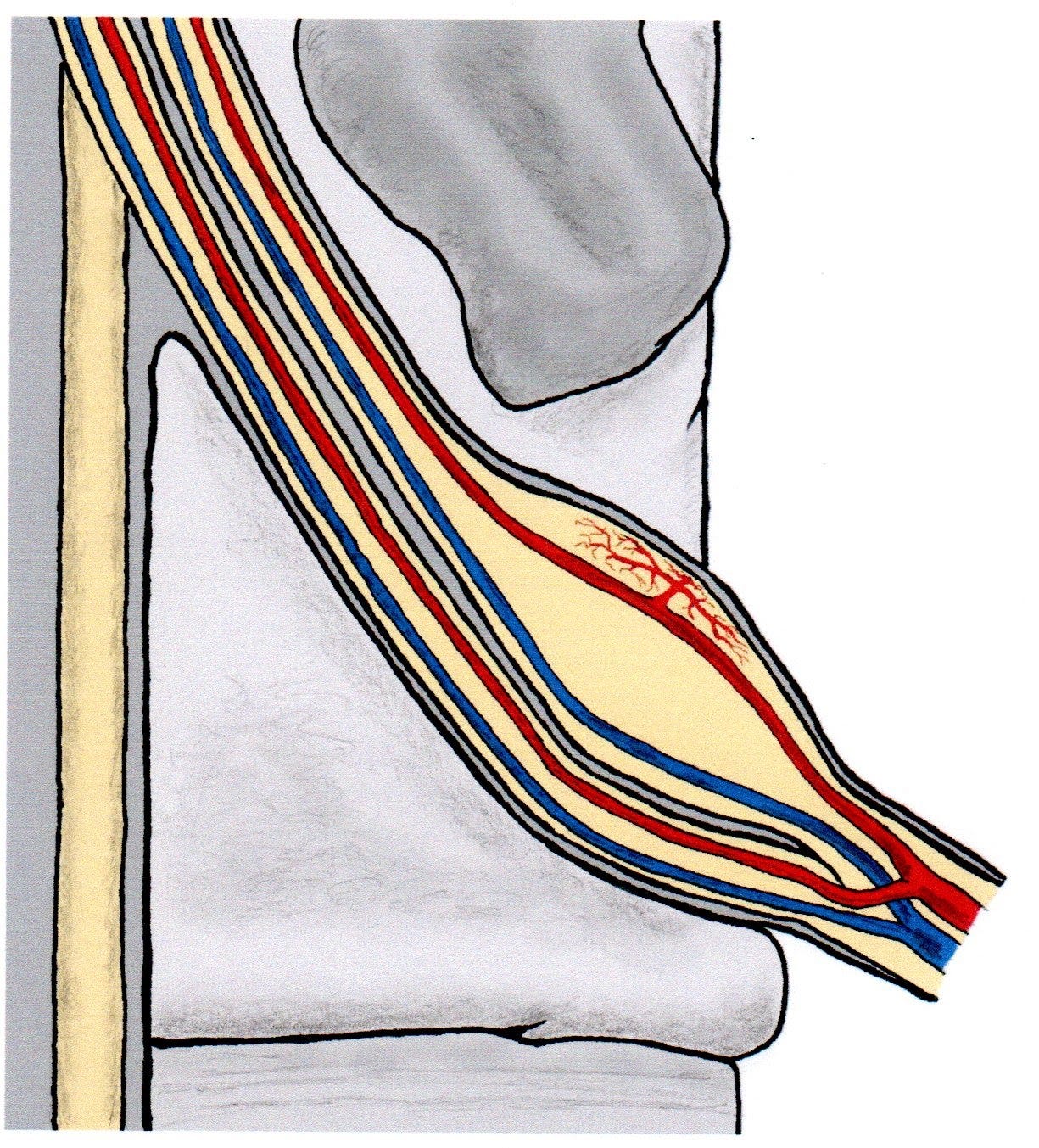Thanks for reading the 24th edition of my sciatica newsletter. This newsletter tracks my research as I write a book about lumbar radicular pain!
Today I have been editing the passage of my book about the more unusual aspects of radicular pain. Sudden pain, stress-induced pain, shooting pain, pins and needles, prickling, itching, running water… and cold feet! You have probably met people with sciatica who wear a thick woolen sock even in the summer because their foot always feels cold.
One reason for this is that injured nerves can become hypersensitive to the cold. This goes for radicular pain, too: one study found that where people with sciatica feel their pain, they are also often hyper-sensitive to cold stimuli. It is not clear why this is. Apparently this sensitivity has historically been understood as a consequence of abnormal processing in the spinal cord. But more recently it’s been found to be a consequence of sensitization of the peripheral nerve. One likely cause is that injured neurons lose some of their potassium channels, which normally act as brakes on action potentials. Another explanation is that injured neurons gain too many cold-sensitive transductive channels, for example TRPM8, which is the receptor for menthol.
Another reason is that some legs with sciatica don't just feel cold, they are cold! Hakelius and colleagues were the first to document, in 1969, that legs with sciatica are colder than their painless opposites. After surgery, when patients' pain had resolved, their legs returned to normal temperature.
The coldness seemed to be caused by disturbed circulation to the skin. The researchers also found that if they blocked the peripheral nerve to the leg, the temperature of the leg returned to normal. They concluded from this fact that the coldness must be caused by the sympathetic nervous system. As you probably know, the sympathetic, fight-or-flight nervous system causes blood vessels in the skin to constrict which makes the skin colder. (This is why when you are frightened, your "blood runs cold"). Hakelius and colleagues suggested that nociception from a nerve root can make the sympathetic nervous system more active in that segment of the nervous system. For people with sciatica, ongoing nociception would mean ongoing sympathetic nervous system activity and an ongoing cold leg.
A more recent study, by Park and colleagues, confirmed Hakelius’s findings. The researchers agreed that this was likely because nociception from a nerve root increases sympathetic activity which makes the blood vessels in the skin constrict. But they also found that a significant minority of people with radicular pain had legs that were in fact hotter than normal.
People with hot legs tended to have more acute pain or pain of a traumatic onset. Park and colleagues speculated that, like people with cold legs, people with hot legs did have increased sympathetic nervous system activity, but that the injury was so fresh or the trauma so significant that their nerve roots could not conduct it to the periphery. And without any background sympathetic activity, blood vessels dilate. This would make the leg hot.
What do you think? To me, the main take-home from this is that temperature changes in sciatica are not necessarily just changes in sensitivity. People’s legs are actually hotter and colder!
As I say, this week I have mostly been editing the text of my book. Each new section I edit I am worried it will be completely crap, but so far I’ve been relieved that it’s all pretty good, and gets better with editing!
I’ve also been illustrating! I am trying to make as many illustrations as I can.
I’m also trying to make illustrations of concepts that you rarely, if ever see illustrated. Here’s an attempt at putting the blood vessels, so important to radicular pain, in the nerve root.
That is a simplified drawing that isolates the radicular arteries and veins. For the record, here’s what is it really looks like in there…
Illustrating is a trade-off between accuracy and clarity! 🤷
Anyway, as long as I don’t hit any major snags putting everything together in a pdf format, I think I am going to meet my deadline. I can’t wait to share it!
As ever, feel free to get in touch. If you reply to this email, I’ll get it!
Til next time,
Tom











Thank you for all the information you have shared throughout the year. I have learned so much and I look forward to your book release and future endeavours. Donal